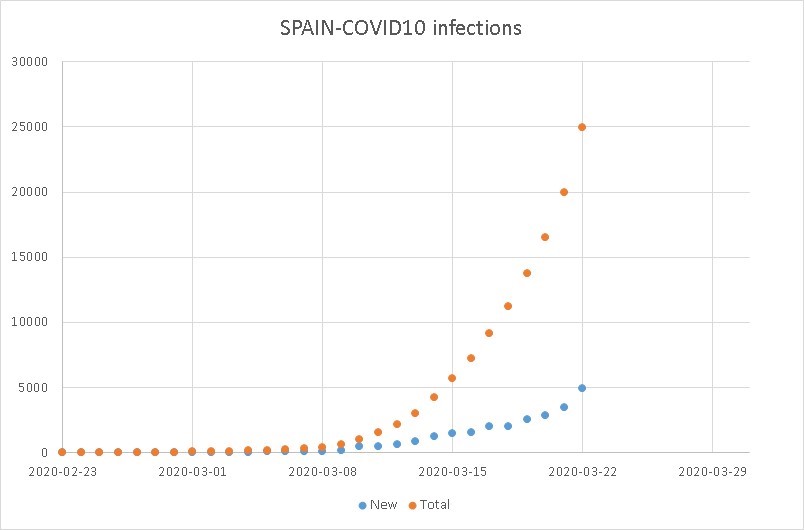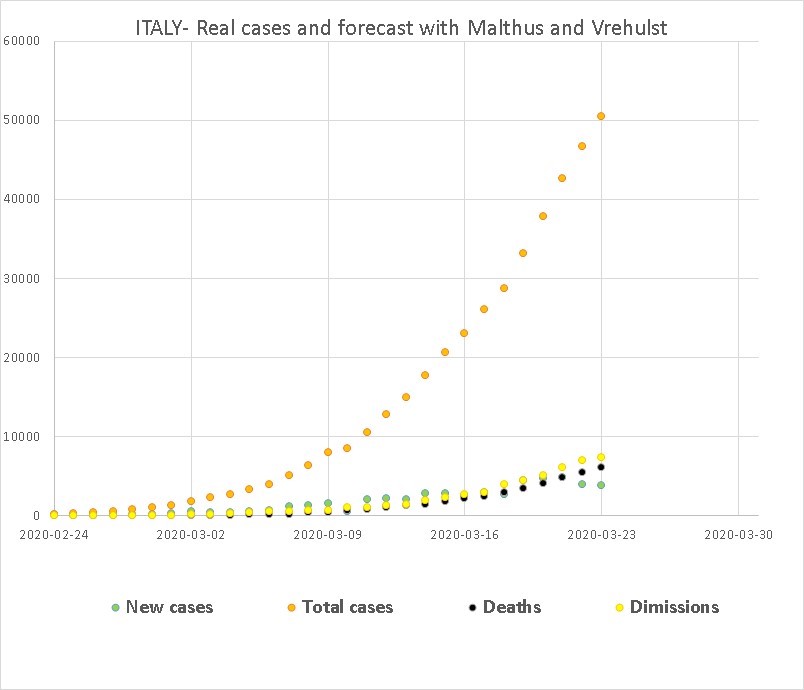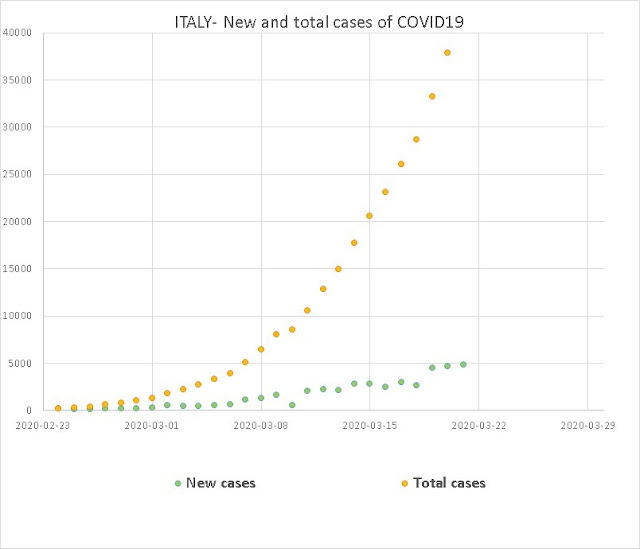SPAIN COVID19 FORECAST MARCH 24TH 2020

March 24th, 2020. I have examined the situation of the infections in Spain, as it appears from the data up to March 23rd. The first two figures show the new and total cases of COVID19 in linear and logaritmic scales. The linear figure shows a trend which appears to be exponential. Fabio Gori, University of Rome Tor Vergata, Rome, Italy. https://didattica.uniroma2.it/docenti/curriculum/4295-Fabio-Gori www.termofluidodinamica.it https://covid19forecast.blogspot.com/ https://eucovid19.blogspot.com/ https://usacovid19.blogspot.com/ https://forbigaio.blogspot.com/ The logaritmic curve shows a slight deviation from the linear trend. The forecast of the new infection, starting from the 22nd, shows that an asymptotic value of around 42,000 is going to be reached by the end of this month. The following figure presents the same data in logaritmic scale.



